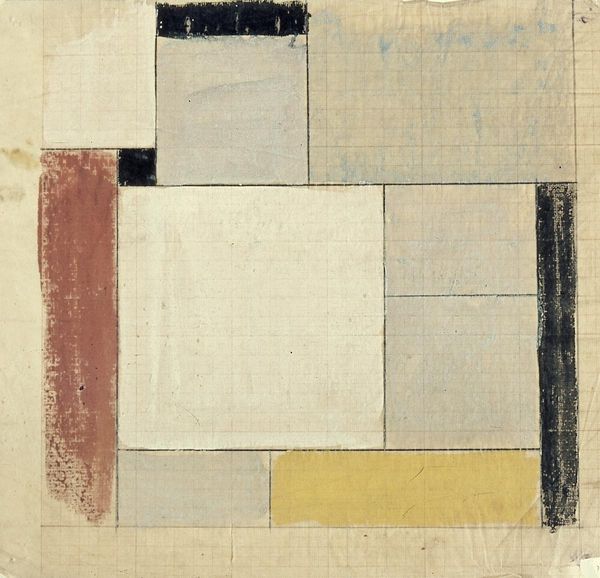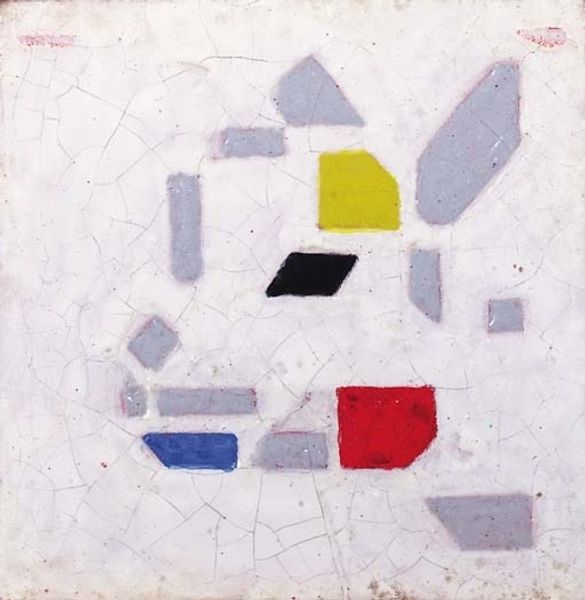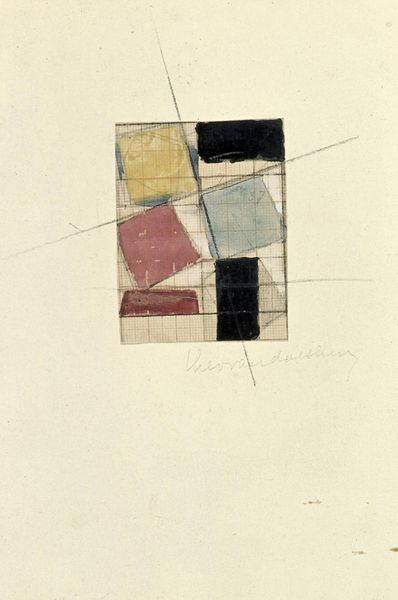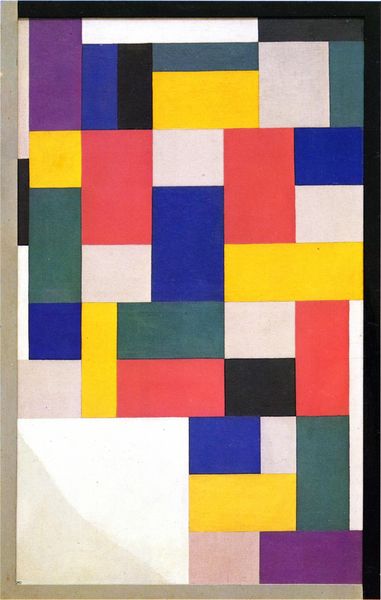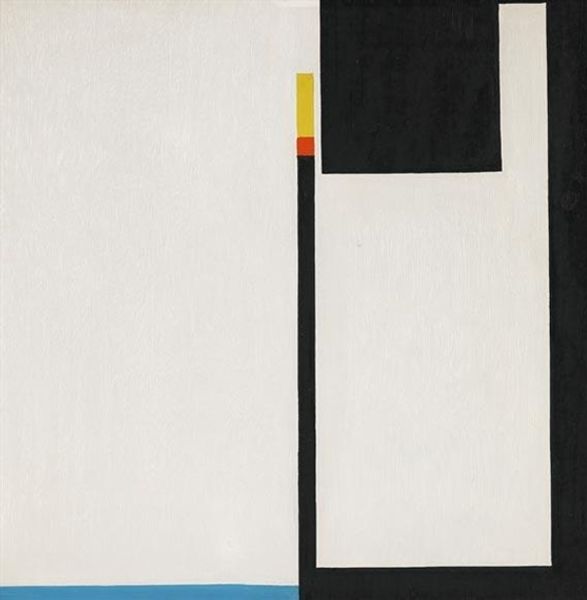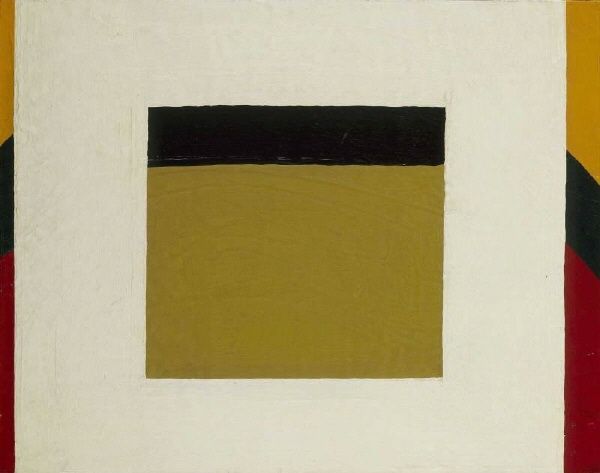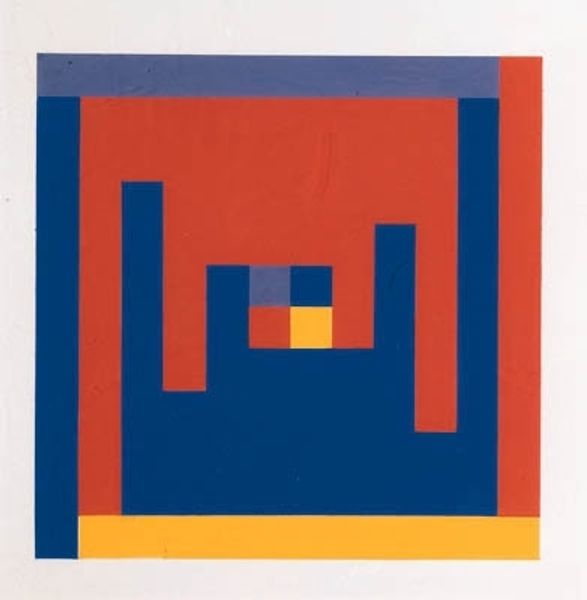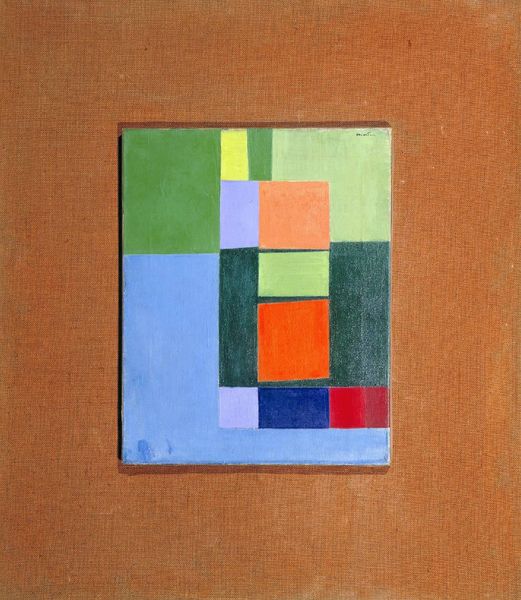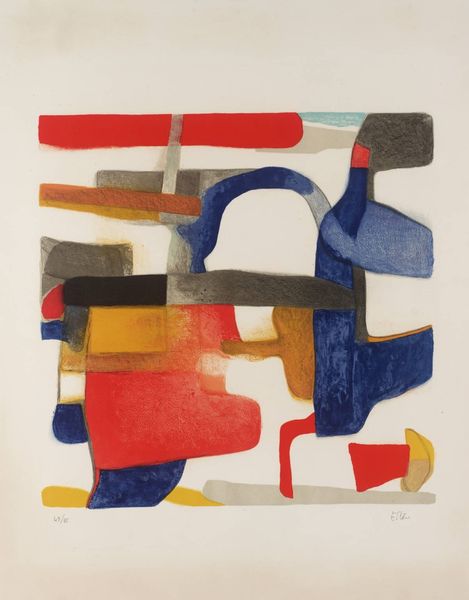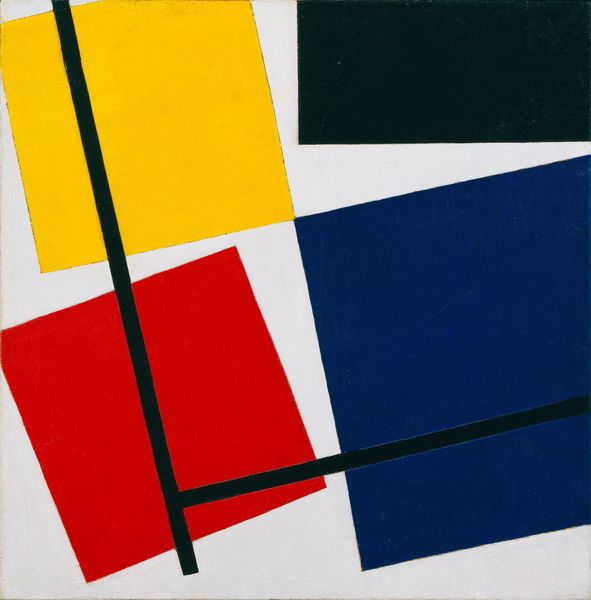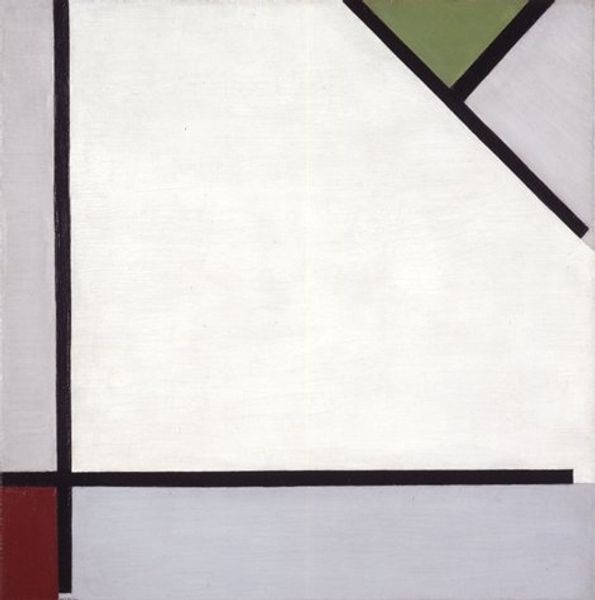
painting, acrylic-paint
#
de-stijl
#
neo-plasticism
#
painting
#
acrylic-paint
#
geometric
#
abstraction
#
line
Copyright: Public domain
Curator: Oh, a neatly balanced number of colorful lines dancing on canvas. At first glance, this acrylic piece feels so carefully thought through, like a silent hymn. Editor: It looks… like someone tidied up a box of colored pencils and then framed it. Don't get me wrong, it's pleasant enough, but the raw materials don't exactly scream 'art' to me. I'm missing the drama, maybe? Curator: Maybe you’re overlooking its inherent nature! It is ‘Study for Composition XXV’ by Theo van Doesburg. Crafted in 1923, it's currently housed at the Kröller-Müller Museum. Editor: Doesburg, eh? Okay, now we're getting somewhere. Knowing this is a study puts a different spin on it. I start seeing it more like a plan, the beginning of something, and focusing on the way its parts were cut or built. Curator: Exactly! Doesburg’s piece breathes within the De Stijl and Neo-Plasticism art movements where abstraction meets almost architectural precision. Notice the geometric harmony! I can get totally absorbed by those rectangles... Do they whisper of a world reshaped by pure thought? Editor: While you're contemplating pure thought, I'm seeing paint and canvas. Think about it: the price of materials, the tools needed, even the social position that allowed someone to sit and arrange colorful lines. How does the price and availability of acrylic paint shape the visual language here? Curator: True. It speaks about industrial production, accessibility of materials. What about the use of color, then? Look how Doesburg balances those rectangles – blue and yellow—primary yet almost serene. Editor: I agree, he has created a visual harmony from industrial components. But thinking materially, this canvas would have to be prepared to make sure that acrylic doesn’t seep in over the years. Curator: Absolutely! The artist had to really commit time into ensuring that materials interact. The frame he used might play with its geometric aspects. Editor: Exactly, we cannot forget the labor and infrastructure! But you know, this piece, though small, seems like a key into understanding the grand puzzle of art itself. It gives me some closure. Curator: It does have an essence, a core feeling behind those balanced blocks of colour and line, you're so right. Its influence stretches even up to present day artists.
Comments
No comments
Be the first to comment and join the conversation on the ultimate creative platform.
